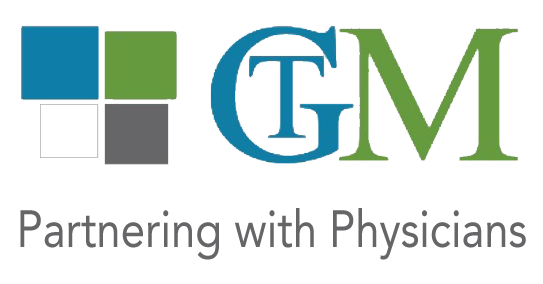As a busy physician, you do not have time to review and oversee the many facets of operating a medical practice. This is further complicated by the fact that while your overhead expenses are increasing each year, your payer contracts are remaining constant, at best, and in many cases declining. That is where GTM comes in. We can quickly identify opportunities to improve your operations and reduce practice expenses; however, our work does not stop there. We will help you implement the recommendations you determine to be most valuable to your practice. We will work closely with your staff to ensure they have the education and tools they need to best perform their functions and implement our recommendations. Our job is to help take the administrative burden off your shoulders, allowing you to rest assured that your practice is functioning optimally, and providing you more time to spend with your patients.

Billing Analysis
- Pull data from financial reports:
- Charges
- Adjustments (contractual)
- Collections
- Total Accounts Receivable (A/R) Balance / Days in A/R
- Accounts Receivable (A/R) Aging Analysis (0-30 days, 31-60 days, 61-90 days, 91-120 days, and 120+ days)
- Patient Encounters
- Compare results to industry benchmarks (“healthy” ranges)
- Benchmark denial volume and turnaround time
- Compare billing expense to billing performance
- Provide recommendations to improve billing/collections and associated expenses
E&M Code Analysis
- Review all E&M codes by volume and percentile
- Perform an audit of E&M code documentation
- Present recommendations to improve E&M code billing and documentation
Expense Analysis
- Review last 12 months of expenses including, but not limited to, benefits, business insurance, malpractice insurance, office and medical supplies, outside labor, etc.
- Create matrix reflecting expenses as percent of net medical revenue and compare to MGMA benchmarks
- Review all bookkeeping procedures and costs
- Review internal controls for cash handling, i.e., check signing for payables, opening mail (specifically patient payments), check stamping for deposit only, petty cash fund, etc.
- Review staff salaries and compare to community norm
- Review current staff and confirm or recommend optimal staffing structure
- Evaluate potential cost savings through a group purchasing contract
- Analyze and present a summary of recommendations
- Recommendations will include operational changes
- Recommendations will include options for less costly vendors
Create Budget
- Analyze last 12 months of financials (income and expenses)
- Review reports with Physician partners
- Create budget, for approval, for next 12 months which incorporates the changes and recommendations adopted through the evaluation process
Internal Controls
- Does practice have a financial policy in place and have all patients received a copy of that policy?
- Is the practice’s net collection rate greater than 97 percent?
- Does the practice attempt to collect outstanding balances at time of scheduling appointment or inform patient of amount due when the patient arrives?
- Does the practice verify insurance and benefits eligibility prior to every office and outpatient service and prior to elective inpatient services?
- Does the practice know the type of plan each patient has and collect copayment, deductible, and co-insurance at the point of care?
- Does the practice collect the amount due from the patient prior to performing elective procedures?
- Does the practice have management reports that enable them to review the quality of the staff’s registration activity and are errors communicated to the staff?
- Is the practice’s registration data accurate and of high quality, with less than 2 percent errors?
- Are claims denied by payers less than 7 percent of the time?
- Does the practice offer online billing inquiries and online payment options to patients?
- Do the physicians and staff know what contracts they have and what the critical elements of those contracts are to ensure compliance and appropriate reimbursement?
- Are patient statements understandable and informative to patients?
- Does practice provide detailed reporting of contractual and non-contractual adjustments and take active steps to reduce non-contractual adjustments?
- Has practice implemented effective internal controls to manage and monitor all money received in the medical practice?
Does practice capture information needed to ensure prior authorization for all services?
